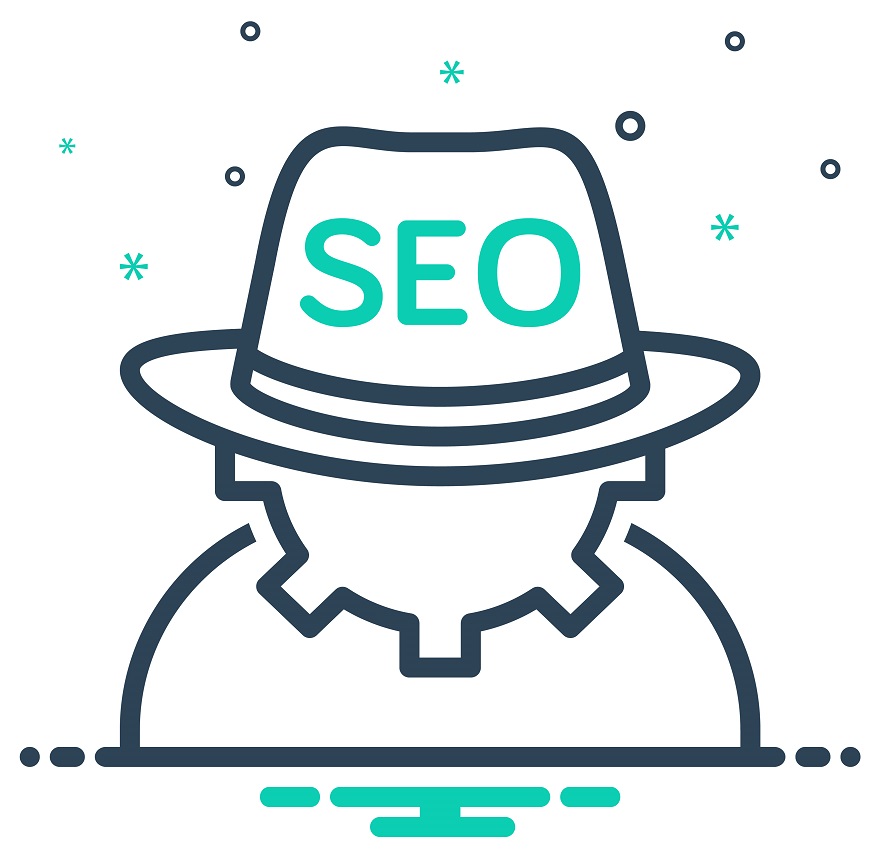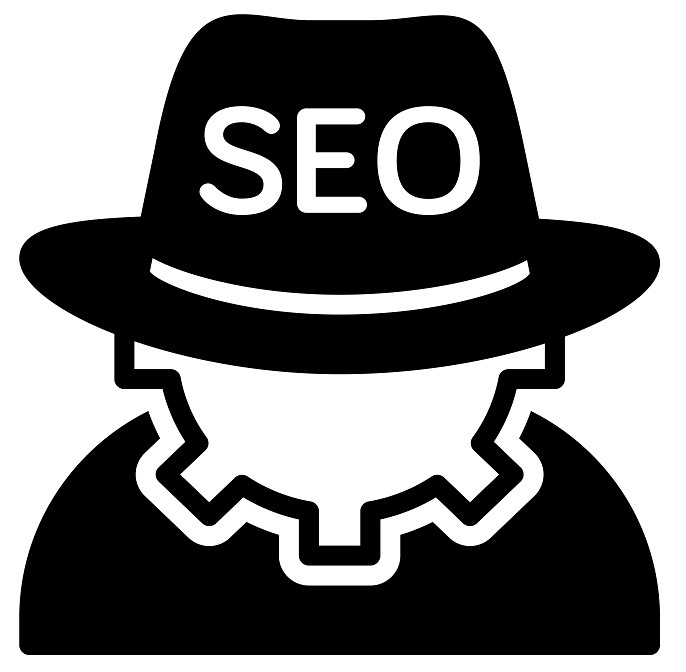Attract more clients with better SEO: Here’s how
Part 2: What is on-page SEO and what is off-page SEO?
What is on-page SEO?
In its more literal and narrow definition, the term ‘on-page SEO’ is about actions taken within the visible content of a particular page to help make it more relevant and useful.
In common usage by digital marketing professionals, however, ‘on-page SEO’ collectively refers to all the non-technical work you can do on your website to increase the visibility of a given page to those making relevant search enquiries. This encompasses edits to on-page content, as well as off-page edits within your website that help that page!

On-page SEO includes:
- Strategically including relevant search keywords and phrases in the main heading and subheadings of your page
- Reinforcing these inclusions in the (invisible) title tag and meta description for your page (these are the text elements that you are instructing search engines to display in their results pages to represent your page; they are not a visible part of your page but they are often set while creating and editing an individual page, so they are usually considered a part of on-page SEO!)
- Making sure that the visible text headings and subheadings on your page are properly encoded as h1, h2 and (if you have additional lower levels of subheading) h3 tags. This is a task your digital marketing agency may undertake but is relatively easy to do yourself with WYSIWYG editors that allow you to pick heading levels
- Making the wording of your title tag and (especially) your meta description as attractive as possible to those who see them in search engine results and who are likely to constitute your target market – this is generally a matter of styling the wording to make it clear and easy to read, and positive and welcoming, as well as being relevant! You have more space within the meta description than the title tag, so while the title tag can only contain a few choice keywords and phrases, the meta description should be a proper sentence or short paragraph that reads well as English (or other applicable language)
- Making sure that the page is quick and easy for users to access within your website, whether by following clearly labelled links from the home page or by using a navigation bar present on every page. Adding a user-friendly HTML sitemap page can also help
- Optimising the file size of the images on the page for quick loading before uploading them to your website. A procedure we would suggest to follow for this for each image is firstly sizing down the image to fill the space that will be allocated to it within the page on a desktop display, then changing the image file format from .png to .jpg to compress the file, and finally running it through a custom data compression utility (we often use the website tinypng.com, which works well with JPEG files as well as PNGs)
- Ideally, saving an ALT tag with each image included on the page that describes in words what the image represents – though this is not necessary for people to find pages that have good text content and headings on conventional text-based search engines, image search engines are popular too and rely to some extent on ALT tags in determining which image results to display in response to particular search queries. So if you want to gain the benefit of drawing in viewers from image searches, you should take the time to create ALT tags for images on your site. Rich text editors in Wordpress etc. allow this.
- Making sure that the page displays well at different screen sizes, including those on mobile, tablet and desktop-based devices. No part of the page content should require lateral scrolling to be visible on mobile devices; there should be sufficient space between clickable elements for navigation by touch-screen on small mobile devices to be straight-forward; and every important element of content and navigation should be accessible. Ignoring these points for mobile users may result in search engines downgrading their rating of page quality and positions
- Ensuring that there are no mistakes in the content of the page, including spelling and grammatical errors, and mistyped or broken links, whether to other pages within your website or to external resources. Since external resources you have linked to can change their addresses or be taken down altogether without your being notified, it’s worth conducting a periodic manual check on all external links in your site.
- Making sure that internal and external links from the page are relevant to the user and add value to the user experience. They should not be to pages on unrelated topics; and any text or image within your page that forms the link source should tell the user what to expect from clicking on it.
Additionally, it is advisable to periodically add new, fresh page content to your site at fairly regular intervals. Fresh content is a positive ranking signal in search engines, including Google, and is sometimes considered a part of on-page SEO.
On-page SEO should be the first step in any SEO campaign.
What is off-page SEO?
Off-page SEO is the counterpoint to on-page. It refers to actions taken outside your website to help the visibility of your site and / or a particular page within it.
The traditional mainstay of off-page SEO is link-building – that is, building up links from external sites to your site and preferably to particular resources within it that you want to be boosted.
In the past, it was common practice to build links by volume, but the search engine algorithms have progressively become more sophisticated at discounting artificial linking patterns and at punishing them. So link-building has become more sophisticated, and much less reliant on directories and link exchanges.
Non-deceptive and legitimate off-page SEO practices are often classed as ‘white-hat’ SEO, while manipulative and deceptive ones are sometimes called ‘black-hat’. While these labels are simplistic, they are commonly used so it is worth being aware of them.
Opinions differ on the borderline between white-hat and black-hat; and there is even the expression ‘grey hat’ to describe the middle ground (like grey areas). The following is our view on where boundaries lie.

White-hat off-page SEO practices include:
- Producing, and then sharing on your social media, content that is of sufficient interest to others that they in their turn post links to it on their websites. This should be the goal of good link-building. In practice, however, it is rarer now for webmasters to post links voluntarily unless your website already attracts a very large volume of visitors every month and includes information resources that are of widespread or significant niche interest.
- Entering details about your website in legitimate online directories, whether general ones (such as Yell, Thomson and Freeindex), local ones that relate to the locality in which your business is based, or trade-specific ones
- Submitting guest articles or co-operating in the production of features for external websites of relevance, with their permission, which may be rewarded with a link to your website (though some links are more valuable than others)
Black-hat off-page SEO practices include:
- Spamming your website details in irrelevant online directories, e.g. trade directories that do not relate to the services or products you provide, and location-specific directories that are for services delivered in areas you do not serve
- Offering your customers specific incentives and rewards in exchange for the posting of links to your website – this is against the policies of common search engines such as Google.
- Paying money to the managers of an external website or blog in return for their featuring your website – while this is extremely common and may boost ranking for a while, search engine algorithms do their best to detect unnatural link patterns
- Offering to exchange links with another website, or responding favourably to a link-exchange offer. When a link is reciprocal, it is considered artificial and not a vote of confidence in your website. You should link to websites that offer something relevant to your users, not because they have linked to you or asked you to link to them. Reciprocal links aimed at boosting visibility in search engines will not be effective.
- Creating external websites under your control for the purpose of linking back to your primary website. This type of scheme is often known as a ‘private blog network’, and is a common technique. In fact, until a few years ago this kind of manipulation of search engines was widespread to the point of being endemic. If undertaken skilfully, it may still be difficult for search engines to detect today; but it will tend to require a lot of time invested to build up the seeming credibility of the false external resources, time that would be better spent on your main site. And if you leave any traces to indicate to search engines the ultimate common ownership of both sites, they will wise up to it and punish your main site for it eventually. Expect no mercy!
When your website and pages within it build up a pattern of legitimate links, you can expect the importance and quality perceptions of search engines in relation to those pages and to the site as a whole to improve.
This is why white-hat link-building is still a valuable part of SEO.
You can monitor your progress with link-building to a degree using freely available SEO tools. Some of these give you a rated scale for the authority of a particular website in terms of the impact of external links, so you can see how you are doing over time compared with the competition. A notable example is Moz, whose ‘domain authority’ and ‘page authority’ scales have become an industry standard. New websites start at the bottom, but it can be satisfying, encouraging and motivating to see your website moving up the scale over the years!
Aside from link-building, another off-page ranking signal is social media reception. Search engines notice when a page receives comments, social media shares, or even ‘likes’. This is one reason why it can be valuable to integrate public comments with your pages, provided that you have the time to monitor them and filter out the spam. It is also a good reason for you to share your new and evergreen page content periodically on your own social media channels, and leave up your shares permanently when they have received likes and non-hostile comments.
In the third part of this article, we’ll explore technical SEO and fault-finding drops in ranking, and conclude with a summary. Good SEO resulting in increased visibility, can work wonders for the discovery of your business by new customers. Implementing it, however, can be tricky. At GWS, we pride ourselves on customer service, so whether you’d like to enlist our SEO Services or whether you’d just like some advice on the subject, feel free to get in touch.

